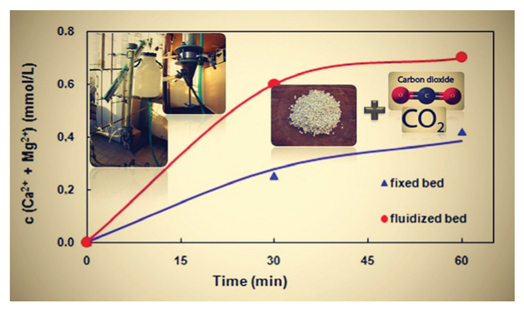Improving of drinking water quality by remineralisation
DOI:
https://doi.org/10.17344/acsi.2015.1590Keywords:
drinking water, fluidized bed reactor, half-calcined dolomite, mineral deficiency, recarbonization, water quality improvementAbstract
The reason of low mineral content in source water is that it originates in the poor soluble mineral geological structures. There are more areas with very soft low-mineralized water in Slovakia. The aim of this work was to study and intensify the recarbonization process. Half-calcined dolomite in combination with carbon dioxide constitutes a chemistry of applied method. The advantages of fluidized bed reactor contributed also significantly to the process efficiency. Continuous input of carbon dioxide into fluidised bed recarbonization reactor resulted in an increase in the recarbonization rate about one order of magnitude compared with the process in his absence. Very good fit of experimental data for hydrodynamic characteristics of fluidised bed was obtained using simple model based on Richardson and Zaki expansion equation. The first order model describes a kinetic data from recarbonization process with a good accuracy. Higher recarbonization rates were observed with smaller particles of half-calcined dolomite.

Downloads
Published
Issue
Section
License
Except where otherwise noted, articles in this journal are published under the Creative Commons Attribution 4.0 International License
